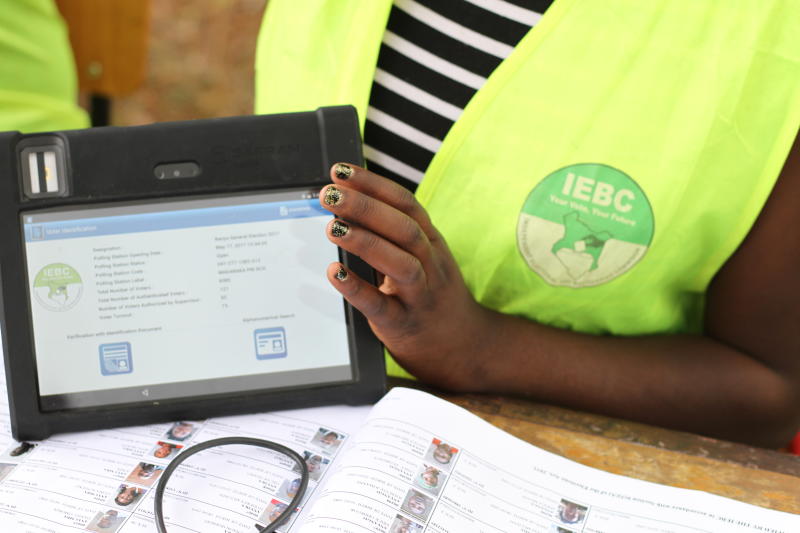
In less than 7 days, the 5th president of Kenya, William Samoei Ruto will be sworn into office, together with deputy president Rigathi Gachagua.
The 2022 general election provided yet another chance for the Supreme Court of Kenya (SCOK) to interrogate the technology, the process and the outcome of the just concluded election.
In particular, the Independent Electoral and Boundaries Commission (IEBC) was thoroughly tested, questioned, and burdened to prove that the technology it deployed from voter registration to results transmission was reliable, dependable, verifiable and able to stand all parameters of accuracy.
This is the fourth time that Kenya is intensively deploying technology in a general election. The 2013 general election provided the first opportunity. It would happen again in 2017 when the presidential poll was undertaken twice, and 2022 makes it the fourth round of tech deployment in Kenyan elections.
After the 2007 acrimonious elections that left at least 1200 Kenyans dead, technology was proposed as a promising solution, capable of curing some of the unfortunate events that took place in that election.
Five years later, there was a good first attempt to move most electoral processes from manual undertakings to tech-based. Although it was largely a success, there were numerous cases of failure of the devices deployed by IEBC. The most notable was the overloading and subsequent crashing of IEBC servers at the national tallying centre. Notwithstanding, the Supreme Court at the time under Chief Justice Willy Mutunga upheld the election of Uhuru Kenyatta, noting that the election was, ”free, fair, transparent and credible.”
In 2017, there were commendable improvements in the use of technology to conduct the general election. The IEBC had significantly improved in its preparedness, training and understanding of the electoral technology used to register and verify voters and transmit results. Nonetheless, the Supreme Court dismissed the petition challenging the election of President Uhuru Kenyatta for the second time. In the ruling, the Supreme Court said that the electoral commission “committed irregularities and illegalities in the transmission of results.”
Retired Chief Justice David Maraga said, “Irregularities affected the integrity of the poll.”
It was thus incumbent upon IEBC to conduct an election that met all parameters previous highlighted at the Supreme Court and by other stakeholders in the political ecosystem. This time, the electoral body took bold steps to shield itself from blame, an aspect that was affirmed by the unanimous decision by the Supreme Court to uphold the election of William Ruto.
In the 2022 general election, the petitioners challenged the Supreme Court to rule on, “Whether the technology deployed by IEBC for the conduct of the general election met the standards, of integrity.”
In their unbridged ruling, the seven judges of the Supreme Court said “Upon considering all the pleadings, submissions and the ICT scrutiny and inspection tallying and recount report, we are not persuaded by the allegation that the technology deployed by IEBC failed the standard of Article 86(A) of the constitution. “ Lady Justice Martha Koome read out loud from the partial ruling of the SCOK.
The court also said that on the allegation that unauthorized persons had accessed the IEBC systems and interfered with results, “ No credible evidence meeting the requisite standard of proof of access to the system by unauthorized persons was adduced by the petitioners. “ The Supreme Court further said that the scrutiny report that the court had ordered on the IEBC’s systems, “didn’t reveal any security breaches of the IEBC’s RTS (Result Transmission System).
With this ruling, the Supreme Court handed the IEBC a significant boost of confidence, especially in terms of the technology deployed.
Like any other institution, the IEBC has its fair of challenges to deal with. However, there are several lessons picked from this election that will help to strengthen the use of technology in Kenya’s electoral processes.
The Commission has succeeded in fully using biometric kits in the registration and verification of voters, and the transmission of results via technology was relatively smooth this time.
With five years to prepare for another round of general elections, the electoral body has enough time to streamline the underlying hitches.
Follow us on Telegram, Twitter, and Facebook, or subscribe to our weekly newsletter to ensure you don’t miss out on any future updates. Send tips to info@techtrendske.co.ke


